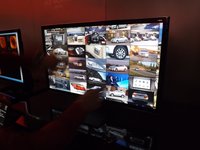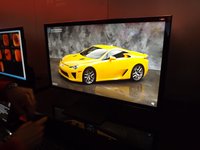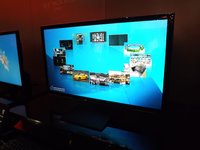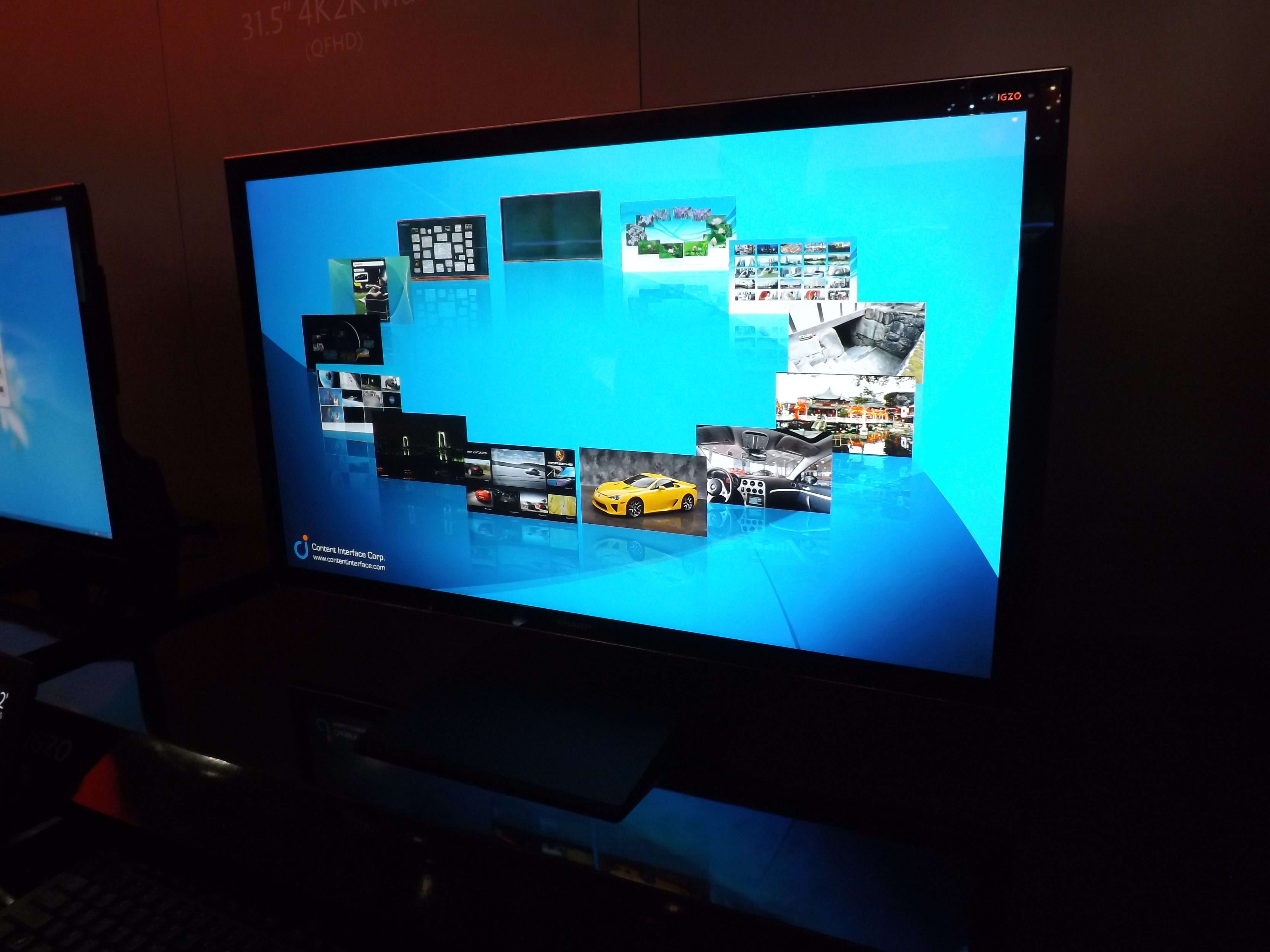Eyes-on With Sharp's Amazing IGZO Display Tech
Sharp was showing off its IGZO technology during CES 2013.
Sharp during CES 2013 was telling visitors to "brace themselves", as the company was showcasing the very first IGZO panel slated for North America. IGZO is a different technology than what's used in panels today, as it's capable of displaying a static image without the need to constantly refresh, thus saving power and battery life.
Later this year, Sharp will launch the 32-inch Ultra LCD IGZO Touch Monitor sporting a 3840 x 2160 resolution and support for 10-point multi-touch input. It will feature a thin design and edge-lit LED, and can be installed in landscape or face up with a slide-type stand. It also promises 24/7 operation.
A sharp representative showed how fast and responsive the display will be by manipulating live 5K video feeds without any visual glitches or chugs. Apparently this monitor was able to stitch the feeds from multiple cameras together thus making one large panoramic view with slightly noticeable seams. When he continuously zoomed in, the panel's interface would turn the pixels into individual video feeds, as if each feed from the galley was a pixel in the main video feed. Zoom in on a video feed again, and the individual pixels turned into separate video feeds.
Sharp also had on display several smartphones using the IGZO technology. As previously stated, the standard display is constantly refreshing the screen, thus smartphone batteries typically last only a day. But with IGZO, static images – such as the stationary home screen – aren't refreshed, thus extending the battery to around two days.
The rep asked if I could tell how sharp the IGZO display was in presenting app icons, and honestly I could not – I just purchased the iPhone 4S with Apple's coveted Retina display, so I was already used to super-crisp icons anyway. But I did notice the size of the screen which made me somewhat jealous given that the iPhone 4S screen is a stupid small 3.5-inches.
According to a Sharp rep, it may be a while before we see IGZO-based smartphones here in the U.S. – they're currently being released by NTT Docomo in Japan. However the tech can supposedly offer approximately 24 hours of continuous still image display, and around 11 hours of continuous video image display.
* Sharp Provides a Glimpse of the Future at CES 2013
Get Tom's Hardware's best news and in-depth reviews, straight to your inbox.




Kevin Parrish has over a decade of experience as a writer, editor, and product tester. His work focused on computer hardware, networking equipment, smartphones, tablets, gaming consoles, and other internet-connected devices. His work has appeared in Tom's Hardware, Tom's Guide, Maximum PC, Digital Trends, Android Authority, How-To Geek, Lifewire, and others.
-
dragonsqrrl "According to a Sharp rep, it may be a while before we see IGZO-based smartphones here in the U.S. – they're currently being released by NTT Docomo in Japan."Reply
That's too bad. A display that doesn't need to refresh a static image seems like a no-brainer for a mobile platform, and not nearly as beneficial in a desktop environment.
How are the viewing angles, colors, and brightness? Are they subjectively on par with IPS? -
house70 "I just purchased the iPhone 4S with Apple's coveted Retina display, so I was already used to super-crisp icons anyway. But I did notice the size of the screen which made me somewhat jealous given that the iPhone 4S screen is a stupid small 3.5-inches."Reply
Sounds like buyer's remorse. Give back that one and get a LG Optimus G, or a HTC OneX+, or a SGS3 if you want a better display that's also quite a bit larger and more usable.
-
keither5150 Stupid small 3.5 inches.....Reply
Yeah, after using the note 2 for a couple of months, I love the size. I don't think that I will be going smaller than 5 inches ever again. 5.5 is perfect for showing photos, videos, or playing games. My thumbs would take up 20% of a 3.5 inch screen.
Longer battery life would be a plus as not all phones can fit a large battery like the note 2. -
p05esto Why all the edge-let LED TVs? Local backlight dimming is soooo much better but basically no tvs have this anymore. There's a 3yr old Samsung and a few others, and then they just stopped and went edge-lit. Odd.Reply -
alexthager keither5150Stupid small 3.5 inches..... Yeah, after using the note 2 for a couple of months, I love the size. I don't think that I will be going smaller than 5 inches ever again. 5.5 is perfect for showing photos, videos, or playing games. My thumbs would take up 20% of a 3.5 inch screen.Longer battery life would be a plus as not all phones can fit a large battery like the note 2. I wouldn't say it's "stupid" though, as that's incredible opinionated. When I owned my iPhone 4, I had no complaints with the screen size. I think it's great that companies are trying out larger screens, but that doesn't mean that smaller screens are bad.Reply
I -
Scar89 p05estoWhy all the edge-let LED TVs? Local backlight dimming is soooo much better but basically no tvs have this anymore. There's a 3yr old Samsung and a few others, and then they just stopped and went edge-lit. Odd.Maybe so they could make the tvs thinner, add the LED's to the side/edges instead of taking up space at the back? Seems to be a craze of making everything thinner these days, though I don't see a point in slimming down TV's any further. Who knows, maybe Samsung will make a TV with their bendable screens and you just roll it out onto your living room wall? lolReply
